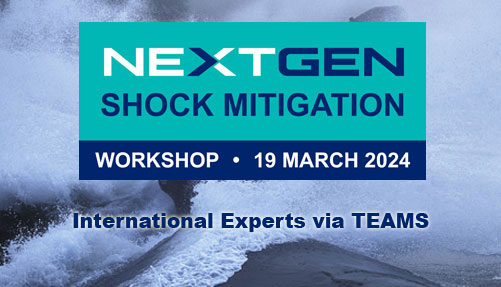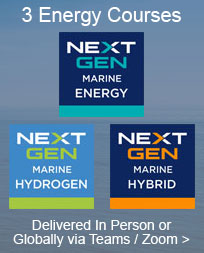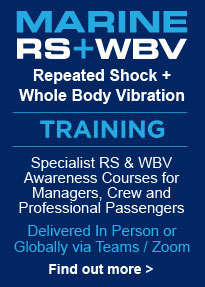
A challenge for the builders of next generation fast craft is delivering platforms that balance performance with the physical demands on crew and passengers.
As engine horsepower increased the human was often considered to be the weak link. Innovative vessel design and suspension seat technology has changed that.
A Shock Mitigation Strategy is Essential
Professional organisations using RHIBs and fast boats need to identify what level of sea conditions are likely to be encountered then ensure that the type and size of craft are fit for purpose. The definition of shock mitigation is, 'to make a violent collision or impact less intense'. A shock mitigation strategy is essential for all craft that undertake open sea transits or operate in rough water. This includes rivers and estuaries with wind against tide conditions, even lakes can produce significant wind blown waves.
Planing craft are selected to perform a wide range of operations. The consistent objective is that passengers arrive safely at their destination ready to do a job, or in some cases fit to fight. In some countries increasing individual fitness and stamina is seen as the solution. In other parts of the world people are expendable as there are others are ready to take their place, but that approach does not help when a boat and crew are underway with a task to complete.
Learning From Other Professional Sectors
With an effective shock mitigation strategy the helmsman, crew and passengers benefit from increased comfort and reduced injury. But shock mitigation is not just about reducing injury. An organisation can increase sea time for assets, cover greater distances at higher speeds, improve crew performance and extend operational effectiveness. It is important to learn from other sectors that have made progress with shock mitigation, but myths need to be dispelled.
From motion analysis metrics on land, sea and air craft it is clear that not all vehicle impacts are simply lesser or greater G forces. A major difference between automobiles and boats is the suspension system managing vibration between road wheels and the chassis. Trucks take this a stage further and have suspended cabs, so the seat is mainly for comfort. An agricultural or mining vehicle driving over rough terrain experiences different loads to a boat at planing speed on rough water.
Measuring the Effects of Vibration and Impact
Monitoring the effects of vibration and impact on the hull or critical pieces of equipment is relatively simple as data loggers can be attached in various ways. Land based industry has been doing this for years on factory and moving machinery, then developing shock mitigation methods to damp or eliminate vibration. Measuring the forces on the deck or on a seat base will produce data, but a topic of major debate in recent years has been how to gather vibration data from the crew and passengers.
As the cost of data loggers has come down various organisations around the world have started to gather and store vast amounts of vibration data. Analysing the data and deciding which metrics are relevant is a challenge. A simple Red Amber Green (RAG) index showing traffic lights on the console is an indicator to show crews that vibration exposure is increasing. The consistent objective is valid and reliable measurement for the assessment of RS (Repetitive Shock) and WBV (Whole Body Vibration).











